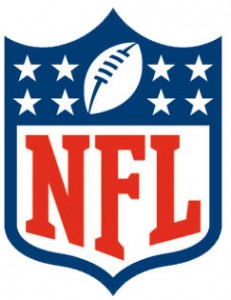 The National Football League may soon be reviewing a proposal from Wright State University designed to better understand injuries from violent helmet blows during games and practices.
The National Football League may soon be reviewing a proposal from Wright State University designed to better understand injuries from violent helmet blows during games and practices.
A rash of scary collisions in recent NFL games prompted the league to tighten enforcement on dangerous hits.
Pittsburgh Steelers linebacker James Harrison sidelined two Cleveland Browns players with head injuries after bone-jarring hits. The Philadelphia Eagles’ DeSean Jackson and the Atlanta Falcons’ Dunta Robinson were knocked out of their game after a terrifying collision in which Robinson launched himself head first. Both suffered concussions.
“The players keep getting bigger, stronger and faster, and the equipment we have to protect them isn’t keeping up,” said Mandy Cowgill, a Ph.D. biomedical engineering student who is involved in the Wright State research.
Wright State is submitting its proposal to NFL Charities, the charitable foundation of the NFL, in hopes of obtaining grant money for the research.
The Centers for Disease Control say an estimated 1.7 million Americans suffer a traumatic brain injury annually. That comes at a cost of $25 billion or more, according to Tarun Goswami, who organized the one-year, student-led research effort at Wright State.
Goswami, a joint associate professor of biomedical engineering and orthopaedic surgery, said the research is aimed at determining how much force is required to produce a concussion and brain injury. Researchers will try to quantify acceleration and impact forces.
“Because we can’t see what’s going on inside the skull, it’s really hard to know how the brain is moving and what is being damaged,” Cowgill said. “We don’t have specifically quantified numbers to explain if you get hit at this velocity and you fall at this rate, you’re going to get a concussion.”
The researchers intend to review X-rays, MRI and other medical imaging data.
The Wright State researchers are also using computational models of human cadaver heads, bombarding them with forces from different directions to see how much of the impact passes through the skull into the cranial fluid and soft tissue. The models were built by graduate biomedical engineering student Alap Patel, who continues to work on this part of the project to determine the numbers.
Cowgill said players may not only suffer brain damage from one-time concussions, but also over the long term because of the repeated head blows. Senior students in the graduate and Ph.D. programs are driving this activity in order to educate high school students.
“You may not get knocked out if you get hit, but if you get knocked down four times a week, it’s going to start to add up,” she said. “Students need to know if they black out or are confused or they can’t remember the last play, they need to tell the coach and they need to sit out. They need to give their brain time to relax so they don’t have serious damage.”
Goswami said schools throughout the region have students who suffer head injuries in football, hockey and soccer. The researchers may visit the schools to share their test results and educate athletes on safer ways to make contact and what to avoid.
“It’s really important to know that if you play the game wrong, you could seriously injure your head,” Cowgill said.
She also said helmets must be well fitted so that the forces are distributed over the entire head. And properly fitted mouth guards help keep the jaw from getting slammed shut, which can cause brain injury.
Cowgill, who has suffered blows to the head from playing recreational soccer, believes many concussions go unreported because players don’t want to get pulled off the field.
“They need to realize that this is their future, their life and their brain function we’re talking about; not just the game,” she said.

 Wright State University Foundation awards 11 Students First Fund projects
Wright State University Foundation awards 11 Students First Fund projects  Gov. DeWine reappoints Board Treasurer Beth Ferris and names student Ella Vaught to Wright State Board of Trustees
Gov. DeWine reappoints Board Treasurer Beth Ferris and names student Ella Vaught to Wright State Board of Trustees  Joe Gruenberg’s 40-Year support for Wright State celebrated with Honorary Alumnus Award
Joe Gruenberg’s 40-Year support for Wright State celebrated with Honorary Alumnus Award  Wright State’s elementary education program earns A+ rating for math teacher training
Wright State’s elementary education program earns A+ rating for math teacher training  Wright State’s Calamityville hosts its largest joint medical training operation
Wright State’s Calamityville hosts its largest joint medical training operation 